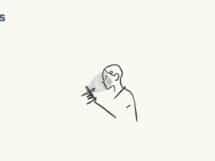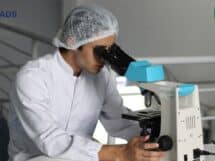“I stared at death up close for the first time in my life.” Read Dr. Debanjan Banerjee’s account of his first Anatomy class and how medicine taught him his first lesson of life.
The hallway was huge with two gigantic wooden doors on either side. It was dark, illuminated faintly by the winter sun peeping through a series of small rectangular windows situated higher in the damp walls. We, the first batch of MBBS (2005), our hearts filled with apprehension and excitement, awaited our first ever Anatomy demonstration class in the dissection-hall of a renowned Medical College in Central Kolkata.
We had this in groups of thirty at a time, that was the norm for adequate space, teaching and obviously observation. The flaming topic of our buzzed-up discussion was whether we would really see human cadavers for the first time in our lives. Hearts were beating fast, breaths heavy, fingers nibbling and assumptions soaring up as we teased each other, falsely boasted to deal with our inner fear and gambled on how each of us would react to the class.
I personally was too engrossed in the fact that it was the first ever time in our career as doctors that we would be introduced to the crude but intricate details of the human body.
We were informed that our demonstrator would take some time. Our impatience knew no bounds; some enthusiasts even started exploring the adjoining rooms for more clues of what’s going to happen in the next few hours. I did not know that this introductory class would leave a permanent mark in my thoughts and values, both as a doctor and as a human for years to come and someday much later I would choose to pen this experience down.
All of us, medicos, have interesting, exciting or dreading experiences all throughout our training and all of them are worth cherishing and sharing down our memory lanes. However, you just like to cling to some of them all throughout your life as precious possession, something that has changed you into someone different.
What followed in this class was something similar!
Our low tone chatter abruptly ended with a rumbling loud noise. Before we could speculate much, the wooden door opened in front and the rolling thud of wheels were heard, as if something was moving fast and angrily down the long hallway ahead. As the sound grew nearer, pumping more adrenaline into our racing hearts, a familiar but sickly smell stung our nostrils.
I instantly got the scent, it was formalin, widely used as a preservative. Much before we could comprehend enough, six stretchers were wheeled into the room in few minutes back to back by stone-faced attenders. That was the first time I ever stared into six lifeless bodies, preserved and bare, without a thread of cloth to be seen. As few of my friends screamed and few others turned away their sight, most excitement vanished into the air as some were even ready to throw up. I frankly could not gather my feelings.
The bodies did not reveal any injury or wound or cause of death. With my own uncomfortable curiosity, I gathered that few were donated bodies of wealthy and accomplished people while others were ‘wasted’ corpses of homeless ones, accidentally discovered and automatically considered to be the hospital’s ‘property’.
The demonstrator hurried in after a while and our first class of dissection lasted three hours. The sight, smell and environment slowly got bearable and the classes became routine. We would all undergo several of them in the future till we clear our finals and eventually take to surgical dissection of living humans in our final year of medicine.
Years down the line, even today when I reflect on that Anatomy class, it makes me realise a crude fact of life. That day as a medical student I had dissected not only human body but also its invisible mind.
The corpses were all lying on damp dried steel tables, stinking of formalin, irrespective of their life-stories or social status. Their blood, organs, veins, nerves, etc. were all following the knowledge of the same human anatomy with minimal variations.
Only later it sunk into me, that on that day as I stared at death up close for the first time in my life, medicine taught me its first lesson, loud and clear: the ‘inevitability’ and ‘equalising qualities’ of death. The differential values and worth of lives were only true as long as they existed! A physician is taught to appreciate this harsh but irrefutable end of material life and thus perhaps, is expected to deal with everyone equally, irrespective of any other differences.
(Dr Debanjan Banerjee is Senior Resident – Department of Psychiatry, National Institute of Mental Health and Neurosciences (NIMHANS), Bengaluru.)
(The views expressed are those of the author)

















